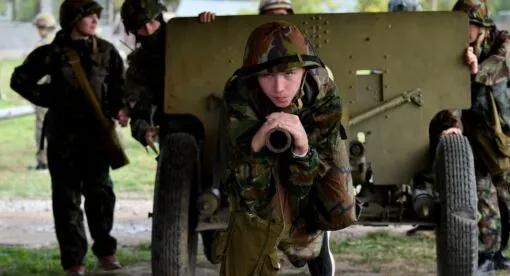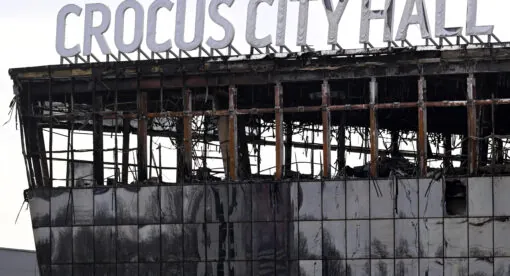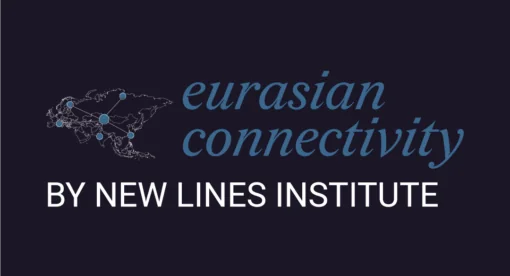A challenging security environment besets Iran. With relatively few partners and even fewer allies, Iran faces a plethora of regional and even global adversaries, from historical geopolitical competitors like Turkey to outright hostile enemies such as Israel and the United States. Making matters more difficult, Iran’s military capabilities are severely deficient in a number of areas, and its economy, hobbled by severe sanctions, does not realistically allow for much greater defense spending. Nevertheless, Iran has built up considerable capabilities embedded in a wily strategic approach that has enabled it to remain a regional heavyweight in spite of its disadvantages.
Broadly, Iran’s strategy for its defense rests on its ability to launch painful counterpunches to deter enemy attacks while maintaining a sufficient military force that could credibly defend against an invasion of Iranian territory. While this strategy on its face is fairly traditional, its elements are anything but. Faced with a long list of opponents and considerable constraints, Tehran has long had to rely on an asymmetric approach for its defense: building useful relationships with regional non-state actors, focusing on the development of cost-effective military tactics, and leveraging its geographic advantages to maximum effect. Iran has applied this asymmetric approach to both the counterpunch and the active defense parts of its grand strategy.
This assessment will examine the strengths and weaknesses of Iran’s armed forces, how their capabilities fit into Iran’s wider asymmetric strategy, and the likely evolution of these capabilities, and will draw some key implications for U.S. policy. This assessment is all the more relevant today as Iran increasingly clashes with the U.S. and its adversaries across the region.

Primary Military Strengths
As one of the most populous countries in the Middle East, Iran boasts the largest armed forces in the region with more than 1 million active and reserve personnel, significantly eclipsing all other regional militaries except for those of Turkey and Egypt. It is certainly important to note that many of Iran’s forces are relatively underequipped and undertrained, and their actual weight in modern combat against technologically advanced opponents would be far less than the paper strength suggests. However, quantity also has a quality of its own, and especially in terms of the defense of Iran’s territory against an invader, the large force provides a crucial advantage.
Subject to sanctions and with a large inventory of obsolescent equipment, Iran has placed considerable effort into developing an indigenous defense industry over the past several decades. This has emerged as a crucial Iranian advantage. Iran’s defense industry is certainly not as advanced as that of Israel or Turkey, nor can its wares compete with the quality of the weapons many of its regional adversaries have been purchasing, particularly from the United States and Europe. Iran has nevertheless achieved considerable success in keeping its aging equipment in operation, modernizing many of its weapons, and even producing some useful indigenous systems for its particular needs.

For instance, Iran has continued to make significant progress in the development of missile and drone systems. Since the missile attacks during the “War of the Cities” of the Iran-Iraq War, Tehran has placed a priority on the development of its ballistic missile force. Progressing from largely inaccurate models such as the initial Scud type derivatives, Iran has now begun fielding much more accurate models in larger numbers, including the Fateh-313 used in the January 2020 strike on U.S. bases in Iraq. Iran has also successfully sought to diversify its offensive capabilities by developing cruise missiles and strike drones, as shown in the September 2019 Abqaiq-Khurais attack on Saudi energy facilities.

Arguably Iran’s most formidable strength is not even directly related to its military power. Iran’s geography presents both daunting defensive barriers and considerable opportunities for offensive action. For defense, Iran’s relatively large size — almost four times the size of Iraq — offers it significant strategic depth. Practically all its borders are well protected by sizable mountain ranges, especially the Zagros Mountains in the west. The majority of Iran’s critical population centers are either nestled in the mountains or are well insulated by them. Iran’s mountainous terrain also presents ample options for the establishment of considerable defensive works, including expansive tunnel networks that can compensate somewhat for Iran’s weaknesses in air defense and airpower.
Iran’s location in the region enables Tehran to present a considerable retaliatory threat that greatly amplifies the deterrence part of its strategy. The country stands astride critical sea lines of communication, particularly through the Strait of Hormuz, and it is close to numerous critical energy fields in the Persian Gulf area, giving it the ability to target critical energy and commercial targets with the potential to seriously disrupt the global economy.
Primary Military Weaknesses
One of Iran’s most critical weaknesses is its military’s overall deficit in advanced conventional weaponry, especially relative to its likely regional and global adversaries. Hobbled by sanctions and constrained by its relatively limited defense budget, Iran’s conventional military arsenal is largely made up of equipment that dates back to the 1970s, the bulk of which was acquired before the fall of the Shah. While a lot of this equipment could still prove useful against weaker enemies, especially in defensive operations, Iran’s arsenal of fighter jets, tanks, and other armored vehicles is woefully inadequate when pitted against the cutting-edge technology available to many of its likely regional adversaries, let alone the United States.
Relatedly, Iran’s air defense capability is also an area of disadvantage. Tehran certainly has some relatively modern air defense equipment, particularly recent acquisitions of S-300 PMU2 and Tor-M1 systems. However, Iran’s lack of a modern fighter and early warning aircraft fleet; its non-standardized inventory of Russian, American, Chinese, and indigenous air defense systems, which complicates logistics, interoperability, and training; its mountainous terrain, which interrupts its radar coverage; and the relative dearth of air defense systems relative to its sizable territory all present serious issues for Iran’s air defenses. In fact, Iran has had to concentrate its air defense coverage on select priorities, especially its nuclear infrastructure and its capital, leaving large numbers of other potential targets with substantially less protection. Iran certainly has the potential means to inflict losses on incoming air attacks, but its integrated air defense network is neither dense enough nor advanced enough to deal with determined strikes, especially from its many adversaries that can use both stealth and standoff strike capabilities.

Another large gap in Iran’s arsenal is its lack of power projection or expeditionary warfare capabilities. Iran has certainly demonstrated the ability to send and sustain forces in different countries around the region, particularly Syria, but even with the threat of Israeli interdiction strikes these remain largely permissive environments where Tehran can rely on local friendly forces, infrastructure, and logistics for its needs. Tehran largely lacks the capability to dispatch an expeditionary force to seize distant hostile territory. Its fleet of a few dozen military transport aircraft, largely made up of aging C-130 transports, is both too small and vulnerable to the modern air forces of its adversaries. On the maritime front, Iran has less than twenty landing ships and hovercraft, sufficient only to fulfill Iran’s existing needs and limited operations in the Persian Gulf area. The lack of air and maritime transport capabilities severely limits Iran’s ability to project conventional military power beyond its immediate borders, especially against prepared enemy positions.
Assessment
Iran’s military strengths and weaknesses greatly inform the operational approach to its defense within its wider strategic imperatives. In terms of the effort to deter attacks by its adversaries, Iran’s lack of a powerful traditional air force and its relatively weak expeditionary fighting capabilities drive it to lean heavily on its missile forces and its advantageous geographic position that allows it to threaten critical regional communication routes and energy infrastructure. These military capabilities are both complemented and supplemented by Iran’s considerable relationships with armed non-state actors across the region and its other asymmetric strengths in intelligence operations and cyber capabilities. Iran therefore has successfully developed the ability to strike back and inflict considerable damage in retaliation against any attack on its territory despite its considerable capability gaps.
In terms of Iran’s direct defense of its territory, its lack of a technologically advanced military and its non-integrated air defense network forces Tehran to lean heavily on its other strengths. For instance, Iran has adopted what it refers to as the “passive defense” doctrine, stressing camouflage, concealment, underground facilities, and the avoidance of concentrated forces for lengthy periods of times where they would be vulnerable to air strikes. All these elements are boosted by Iran’s advantages in mountainous terrain and strategic depth, which enhance the survivability of Iran’s large, if underequipped, forces and provide them with the ability to impose painful costs on any invader.
Forecast
Given Iran’s existing military strengths and weaknesses and the geopolitical environment it finds itself in, Tehran is likely in the years ahead to continue investing in and aligning its military with the asymmetric strategy it has adopted thus far. This likely trajectory is informed by both the lack of a realistic alternative and the relative success of the strategy thus far. Continued sanctions pressure and low energy prices look set to continue for many years to come, largely negating any potential opening for Tehran to find enough resources to invest in a conventional military to match that of its adversaries. Meanwhile, the deterrence potential of Iran’s offensive capabilities in terms of missiles, non-state actor groups, cyber, and other aspects of its asymmetric forces is highlighted by the fact that all of Iran’s adversaries have refrained from a serious strike on its territory — even direct attacks by Iran on U.S. bases and Saudi energy facilities have not led to an immediate counterstrike on Iran’s territory.
Nevertheless, Iran can hardly feel secure with its current defensive position. Despite the demonstrated potential, Iran’s ability to deter its enemies is showing some real strain. Iran’s counterstrike capabilities have been unable to prevent the intensifying Israeli airstrikes on Iranian military and intelligence assets in Syria, the U.S. January 2020 assassination of General Soleimani, the persistent and assassination sabotage campaign within Iran, and the heavy sanctions and economic pressure on the country. Furthermore, had the Iranian missile strikes on U.S. bases led to dead U.S. troops, the likelihood would have been very high that Washington would have retaliated with strikes on Iran’s territory. All these show that there are real limits to the success of Iran’s ability to deter hostile action, which will further drive Iran to shore up its asymmetric capabilities as this approach remains the most promising and feasible despite its issues.
Intersection with U.S. Policy
The United States has recently been focused on a diplomatic effort to extend the U.N. arms embargo on Iran that expires on Oct. 18. The New York Times reported late last month that Secretary of State Mike Pompeo is going as far as to prepare a legal argument that the United States remains a participant state in the Iran nuclear accord in order to invoke a snapback of sanctions on Iran. In an argument with U.S. Sen. Elizabeth Warren (D-Massachusetts), Pompeo alluded to the potential for Iran to purchase two divisions of VT-4 tanks from the Chinese if the embargo expires. However, the removal of sanctions preventing Iran from purchasing conventional weaponry from other states is unlikely to mark a critical surge in Iran’s military capabilities in the decade ahead.
Iran’s significant economic constraints, the continued threat of secondary sanctions from the United States, and the Iranian preference for the development of indigenous weaponry will all weigh against significant Iranian purchases of foreign arms. That is not to say that Iran won’t seek to acquire select technologies that could help boost its particular asymmetric strategy — for instance, more advanced cruise missiles. But a new ability to purchase foreign arms would not enable Iran to redress the distinct qualitative disadvantage it holds in general conventional weaponry relative to its major regional adversaries, let alone the United States. In fact, the possibility that Iran could seek the acquisition of two divisions of VT-4 tanks would actually divert funds away from purchases of weapons that could be far more threatening to Iran’s adversaries.
Of more particular concern for the United States is the potential for a descent into a major conflict with Iran at a time when Washington is seeking to divert its attention and resources to the competition with Russia and China. Two aspects of Iran’s military capabilities and strategy intersect with this concern. The first aspect is related to the cracks in Tehran’s ability to deter hostile action against it, including the economic pressure it finds itself under. The status quo is hardly tenable for Iran, driving it to raise the pressure on the United States through aggressive action in the Persian Gulf and through militia attacks in Iraq. We have seen a lull in this approach in recent months, potentially in part due to the need to focus on the COVID-19 pandemic, but a resumption of Iranian action is arguably still high in the months and years ahead.
The second variable raising the potential for hostilities has to do with Iran’s capabilities, especially their limits. Iran is fully aware that its forces, including its counterstrike forces, remain very vulnerable to a concerted U.S. attack even with all the measures it has taken to enhance their survivability through its “passive defense” doctrine. In the event of a spike in geopolitical tension, this puts pressure on Iran to act fast and launch its strike before its missile units are destroyed in garrison and its naval craft are knocked out in port. The diminished window for action raises the need for a communications hotline mechanism between the United States and Iran that could be used to help clarify intentions and initiate a de-escalation process. During the January 2020 strikes, the Iranians and Americans used various diplomatic channels for this process, but this may not be enough in a sudden crisis stemming from an unforeseen skirmish.
Omar Lamrani is a geopolitical analyst who specializes in conflict analysis and military dynamics. Lamrani is an expert on air, land, and naval strategy; military technology and logistics; the great power competition in space; and defense doctrine, including the Middle East, Europe, and Asia. He previously served as Senior Military Analyst at the geopolitical analysis firm Stratfor for eight years. Mr. Lamrani holds a master’s degree from the Diplomatic Academy of Vienna, where his thesis centered on Chinese military doctrine and the balance of power in the Western Pacific.
The views expressed in this article are those of the author and not an official policy or position of the Newlines Institute.







